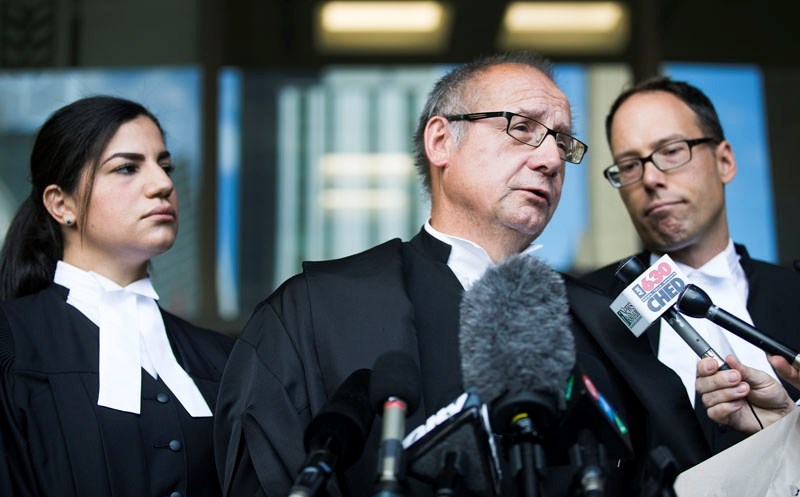Justice Denny Thomas decided the circumstantial evidence was just too compelling to ignore. His guilty verdict in Travis Vader's trial for the murder of St. Albert couple Lyle and Marie McCann vindicates what prosecutors were saying all along.
Justice Denny Thomas decided the circumstantial evidence was just too compelling to ignore.
His guilty verdict in Travis Vader's trial for the murder of St. Albert couple Lyle and Marie McCann vindicates what prosecutors were saying all along.
Thomas' decision ultimately came down to the credibility and comprehensiveness of the plethora of circumstantial evidence presented at trial.
Crown case
Crown prosecutor Ashley Finlayson had said repeatedly in his closing arguments June 22 that taken individually these pieces of evidence leave doubt, but taken as a whole they present a compelling case.
“When you look at the totality of the evidence, that's the only rational inference that can be drawn,” he said.
He painted the picture of Vader being broke, addicted to methamphetamines and desperately in need of money.
Finlayson said some time around noon on July 3, about two hours after Lyle and Marie McCann were last seen at the Superstore in St. Albert, Vader met them on or near the side of the highway by Peers, Alta., and robbed them. The confrontation turned violent, and he killed one of the two.
“After the first McCann was murdered, in order to eliminate the presence of a witness, Mr. Vader deliberately murdered the second McCann,” Finlayson speculated.
Finlayson said Vader then used the McCanns' phone to contact his ex-girlfriend Amber Williams, calling her several times and sending two text messages.
Earlier in the day he had been at his friend Dave Olson's house driving a light-coloured Ford F-350, broke. He returned later that afternoon, with the McCanns' SUV and money.
Vader then went to Edmonton the next day and stayed at a friend's house, where his sister and another ex-girlfriend were also staying. When he got there, he was physically ill and exhausted, and driving the F-350.
He left the SUV at an unused rural property near Highway 16 west of Edmonton, where the property owners found it and reported it to police on July 16.
Forensic investigation showed Vader's fingerprints, DNA and blood all over the vehicle.
“His DNA on various items in that SUV, that's evidence of him having control of that vehicle and not some random happenstance,” Finlayson said.
Prosecutors said Vader left the keys to the SUV in the box of that truck, which was found partially burned on an oil lease site. Police found the keys during a second examination of that truck about a month later.
Finally, Finlayson said Vader's post-evidence conduct – hiding the stolen SUV, lying to police about his whereabouts July 4 to 9, asking his sister to “recant your statement,” and telling a cell mate about how he would burn trucks – lead to the “inescapable conclusion” that Vader is guilty.
Defence case
Defence lawyer Brian Beresh, however, took issue with that version of events. While not required to present his own timeline – Vader did not testify in his own defence – Beresh argued reasonable doubt exists on several fronts.
“A chain is only as strong as its weakest link,” he said, noting the Crown's logic is flawed in suggesting there's only one conclusion that could be drawn from the evidence.
He cited conflicting evidence on whether Vader used methamphetamines as one example of doubt, and also suggested some of Vader's former associates who testified against him were “in cahoots” to pin the crime on him and claim the reward.
Beresh also raised the question of whether Terry McColman, now deceased, was ever properly considered as an alternate suspect.
But the strongest example of the weak links in the evidence, he suggested, had to do with the DNA evidence. While Crown witnesses testified they were confident the DNA samples belonged to Vader, Beresh's DNA expert Dr. Randell Libby testified he believes most of those DNA tests didn't produce strong enough evidence to conclude the DNA belonged to Vader.
“The defence submits that the prosecution has fallen woefully short of meeting its burden of proof beyond a reasonable doubt for any criminal offence,” he concluded in his written argument.
